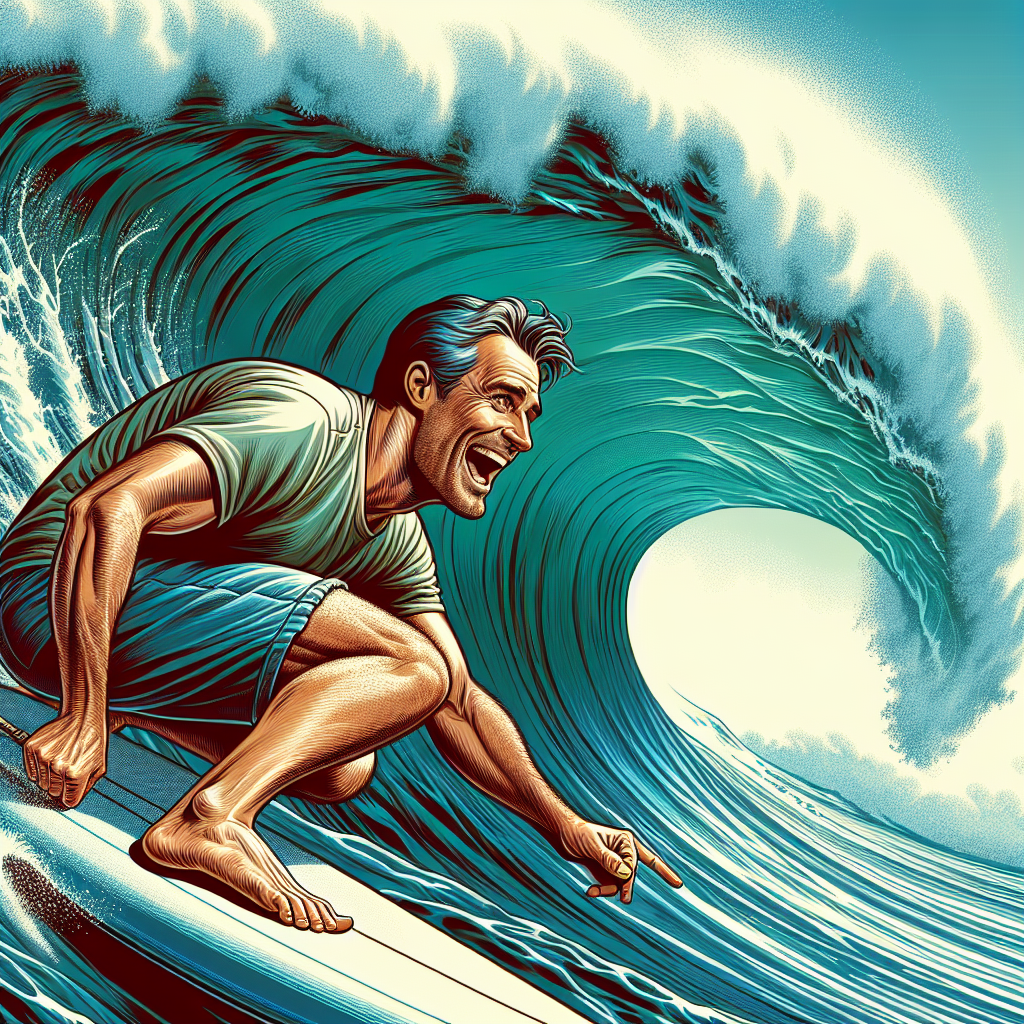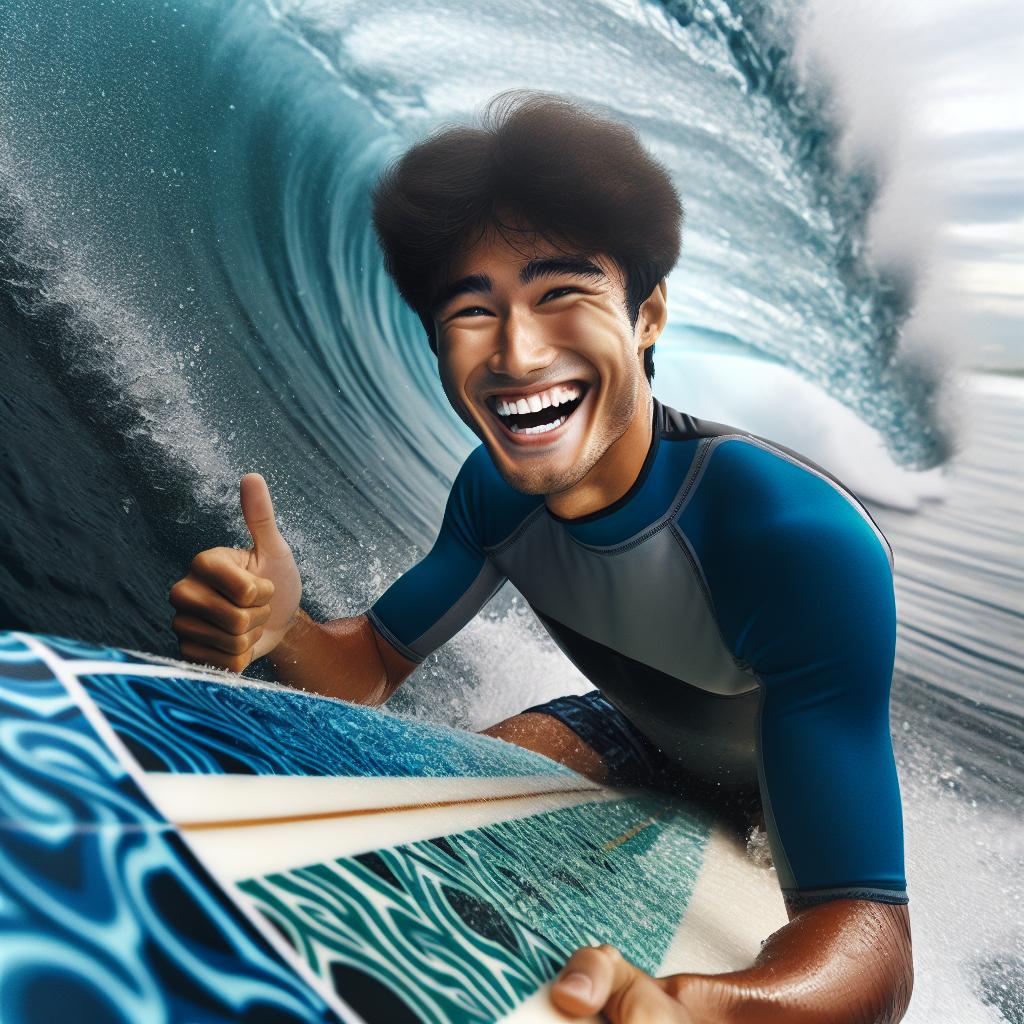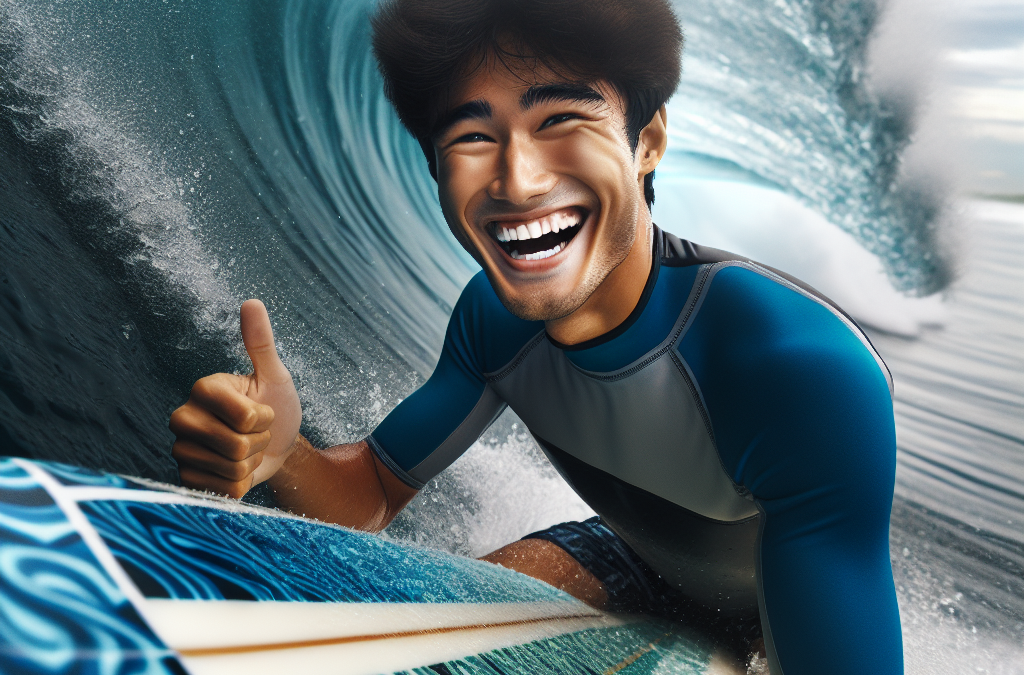You’re about to embark on an incredibly exhilarating journey. “Surfing For Beginners: Catching Your First Wave” is a guide designed just for you, providing essential tips, tricks, and insight into the world of surfing. From understanding the basics of balance and board control, to expert advice on wave selection and timing, everything you need for a head start in embracing the waves is in here. So, strap up! Your adventure into the realm of surfing is about to begin.

Understanding the Basics of Surfing
Getting familiar with the basics of surfing is an essential part of the process you should never skip. You can’t just grab a board and hop into the water without any knowledge. It takes understanding and preparation to ensure you are ready to surf.
What is Surfing
Surfing is a beautiful water sport that appeals to adrenaline junkies and peace seekers alike. It involves a person (you) riding breaking waves towards the shore. While traditional surfing involves the use of a physical board, there are variations like body surfing and paddleboarding that don’t necessarily need one.
Brief History of Surfing
Surfing dates back to ancient times, first practiced by the indigenous Polynesians. It was then discovered by Westerners in the 18th century when Captain Cook had his voyage. The sport gained popularity in California and eventually around the world. Now, it’s a competitive sport and a beloved recreational activity.
Popularity and Practice of Surfing
Surfing has evolved into becoming a worldwide phenomenon, with millions of people participating in it, either professionally or for leisure. You can find surfers in virtually every corner of the globe, where there are waves to ride.
Getting the Right Equipment
Just like any other sport, surfing requires the right gear to help you perform effectively and keep you safe.
Choosing the Right Surfboard for Beginners
As a beginner, the right surfboard for you is one that’s large and wide. This design provides better stability and makes it easier for you to learn surfing.
Importance of Using Surfboard Leash
A surfboard leash is vital for your safety as it keeps your board near you when you fall. As a beginner, falling off is bound to happen. A leash ensures your board won’t drift away, saving you from a potential swim back to shore.
Choosing the Right Wetsuit or Surfing Apparel
Depending on the surfing condition, having the right attire is crucial. If you’re surfing in cold water, you’ll need a wetsuit to help keep you warm. For warmer water surfing, surf trunks or swimsuits should suffice.
Understanding Additional Surf Gear: Wax, Fins, etc.
Wax can provide grip and prevent you from slipping off your board. Surfboard fins help maneuver and control during your ride. Knowing your additional gear is instrumental for a smooth surfing experience.
Choosing the Right Surfing Location
Choosing the right location to surf is as crucial as getting the right equipment.
Surfing Locations for Beginners
As a beginner, it’s best to select beach breaks with smaller and slower waves. Make sure to ask local surfers or surf schools for recommendations.
Understanding Breaks and Waves
Learn to recognize what a good and safe break looks like. Different breaks produce different waves. Some waves break to the right, some to the left, and some aren’t good to surf at all.
Recognizing Local Surf Etiquette
Respect the rights of other surfers, and always keep an eye out for local etiquette. These unwritten rules help keep everyone safe and maintain a good surfing ambiance.
Skills Before Hitting the Water
Before you enter the world of surfing, you need to have some vital skill sets ready.
Physical Conditioning for Surfing
Surfing demands a lot from your body. Make sure you’re physically fit with cardio exercises like swimming or running.
Exercises for Balance and Strength
Practicing exercises that strengthen your core and improve your balance like yoga, pilates, or even skateboarding can be beneficial.
Learning Basic Swimming Skills
Strong swimming skills are crucial before you start surfing. You must be comfortable in the water and capable of swimming back to shore if necessary.
SafetyFirst: Respecting the Ocean and Its Currents
Understanding the ocean, its currents, and potential hazards such as rip tides or marine life is crucial. Always ensure your safety first.

Understanding and Reading Waves
Recognizing the right kind of waves is an essential part of surfing.
Types of Waves
There are different types of waves – beach breaks, point breaks, and reef breaks. As a beginner, you should stick to beach breaks as they are safer and easier to handle.
Spotting the Good Waves for Beginners
Good waves for beginners are small, slow, and break into white water. They provide you an opportunity to practice your balance and riding without too much risk.
Predicting and Monitoring Wave Conditions and Tide
Learn how to predict and monitor wave conditions. Certain apps and websites can help you figure out the best time to surf based on tides, swells, and wind conditions.
Basics of Paddling
Paddling is how you get into the wave, and it’s the first skill you must master.
Paddling Techniques
Learn the correct techniques for paddling. It’s about more than just strength – technique and timing play significant roles in proper paddling.
Improving Paddling Strength and Endurance
Increase your paddling strength and endurance through specific exercises like push-ups and swimming.
Positioning on the Surfboard while Paddling
Ensure you position yourself correctly on the board. If you’re too far forward, the board will nose dive, but if you’re too far back, you won’t be able to catch the wave.
Catch and Ride Your First Wave
This section involves the exciting part – catching and riding your very first wave.
Identifying the Right Wave
Identifying the right wave takes practice but, once you do, it’s a game-changer. Look for a wave that’s steady and rolling towards the shore.
Timing for Paddling and Standing Up
Knowing when to start paddling and when to stand up can make a big difference. Too early and you’ll miss the wave, too late and you’ll nose dive.
Positioning and Balancing on the Surfboard while Riding the Wave
Once you’re on the wave, maintaining balance and proper positioning on the board is crucial. Keep your weight forward for speed, back for braking, and balanced between your feet for stability.
Safety Tips while Riding the Wave
Staying safe while riding involves not paddling into a crowded area, not ditching your board, and knowing how to fall correctly.
Standing Up on the Surfboard
Getting up on the surfboard is a significant milestone in your surfing journey.
Techniques to Stand Up on the Surfboard
The perfect pop-up involves one fluid motion of going from your belly to standing up on the board. Getting this right might take time and practice.
Common Mistakes and How to Correct Them
Common mistakes include looking at your feet instead of at the horizon, uneven weight distribution, or standing up too late. Take time to correct them with practice and keen observation.
Improving Balance on the Surfboard
The key to maintaining balance is to position your feet correctly, keep your arms out for counterbalance, and look ahead, not at your feet.
Basic Surfing Maneuvers
As you become comfortable standing up and riding waves, you can start learning some basic maneuvers.
Turning on the Wave
You can control a turn by shifting your weight on the board and using your back foot as a pivot point.
Trimming and Changing Direction
Trimming is all about adjusting your body’s position on the board to either accelerate or decelerate. And changing direction involves simple weight shifts and leaning in the direction you want to go.
Practicing on Flat Waves First
Before you get to the bigger waves, practice your maneuvers on small, flat waves.
Closing Thoughts and Further Guidance
Remembering that Every Surfer has Once Been a Beginner
Every good surfer was once a beginner. Don’t be discouraged by mistakes and remember to have fun throughout the process.
Local Surfing Classes and Communities
Joining local surfing classes and communities can provide invaluable guidance and support and speed up your learning process.
Advanced Surfing Skills to Consider Learning in the Future
Once basic skills are mastered, you can advance to trying out carving turns, cutbacks, and as you progress, barrel waves and aerials. The journey of surfing never ends!
So here it is, a comprehensive guide on catching your first wave. Enjoy the water, the waves, and be safe!

